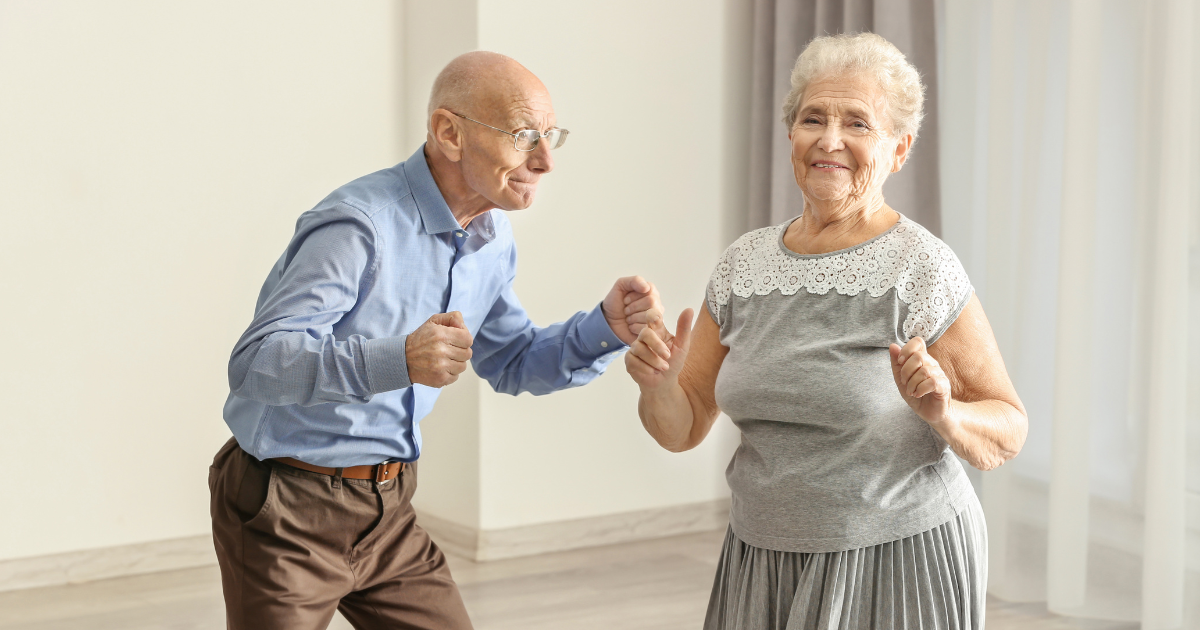How does elderly dancing promote health and well-being?
Regular dancing has proven to be a significant source of physical and mental benefits for individuals aged 85 and above. According to recent research led by the University of Leeds, the “Dance On” project has shown remarkable improvements in the well-being and mobility of older adults through weekly elderly dancing classes. Let’s examine the positive impacts of elderly dancing on the health of the elderly, highlighting the findings from the project and emphasizing the importance of promoting dance as an accessible and effective option for active aging.
Enhancing Physical Activity and Mobility
Engaging in regular dancing, specifically tailored for the elderly, provides a unique opportunity for elderly individuals to maintain and improve their physical activity levels. The “Dance On” project, which involved 685 participants aged 55 and older, showed a significant increase in physical activity among older adults who took part in weekly elderly dance classes over a 12-month period. The participants continued to sustain this increased level of activity throughout the year, showcasing the long-term activity benefits of elderly dancing.
Moreover, elderly dance classes are particularly beneficial for older people as they offer a safe and enjoyable way to improve mobility and balance as well as socialization by being around others their age who are at a similar experience level. By engaging in various dance movements, older adults can enhance their coordination, flexibility, and overall physical strength. The inclusive nature of the initiative was evident, with participants from diverse backgrounds, including highly deprived communities, benefiting from these elderly dancing.
Promoting Mental Well-being and Sense of Youth
Beyond the physical benefits of elderly dancing, it’s also been proven to have a positive impact on the mental well-being of elderly individuals. Participants in the “Dance On” project reported an uplift in their mental state, including reduced anxiety, improved life satisfaction, and an overall sense of well-being. Many even expressed feeling stronger, more confident, and “years younger” as a result of their elderly dance engagement.
Elderly dancing acts as a bridge that connects older adults with their past experiences of dance, fostering enjoyment and a sense of community. Reconnecting with their younger selves through elderly dance not only brings joy but also helps combat the feelings of isolation and loneliness that can often accompany old age. Elderly dance sessions provide a social setting where participants can interact with others, forming connections and friendships that contribute to their overall happiness and mental health.
Spreading the Benefits and Looking Ahead
The researchers from the University of Leeds are dedicated to spreading the positive effects of the “Dance On” program, also known as elderly dancing, beyond their immediate community. The inclusive and accessible nature of elderly dance sessions makes them an ideal option for elderly individuals in deprived areas, as classes can be organized inexpensively and conducted in safe indoor environments. The success of the “Dance On” project, which began as a smaller initiative called “Dancing in Time,” has paved the way for the expansion of music and movement sessions in care homes.
Presenting the findings at a global conference, Dr. Sarah Astill and her team aim to influence the perception of elderly dancing as a valuable tool for active aging worldwide. By highlighting the numerous benefits of elderly dancing, they hope to encourage councils, health officials, and charities to consider elderly dance as an effective option for promoting the well-being of older people.
The evidence is clear: regular elderly dance sessions have a transformative impact on the health and well-being of individuals aged 85 and above. The “Dance On” project, also known as elderly dancing, has demonstrated that dance not only enhances physical activity but also boosts mental well-being and fosters a sense of youthfulness among the elderly. As we strive to support healthy aging and improve the quality of life for older adults, it is crucial to recognize the potential of elderly dancing as an accessible and effective option. By promoting elderly dance programs, we can help older individuals maintain their vitality, socialize, and experience the joy of movement well into their golden years.
Curious about how our caregivers can help facilitate going to classes and participating in elderly dancing? Check out our services page that explains our various services that can assist with transportation and companionship.
Sources:
Jiving into Joy: Dance Sessions Elevate Health and Well-being in 85+ Age Group






